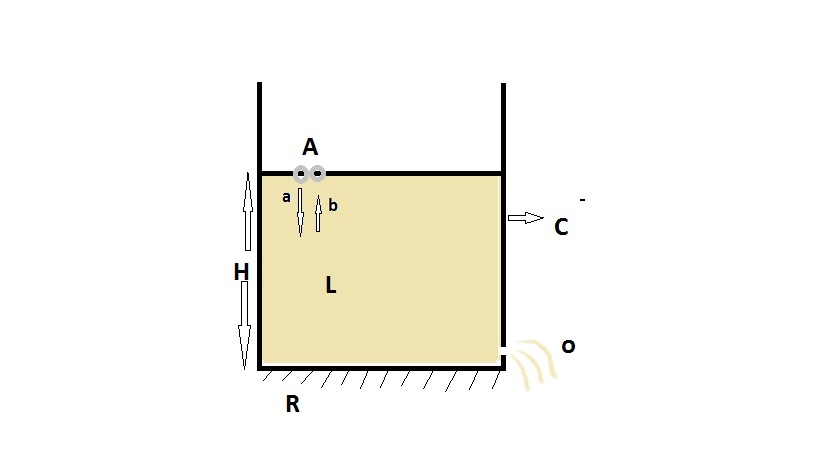Inspired by Dish-washing!
Consider the following diagram-

L is a murky ideal liquid of refractive index filled in a container C of cross section Z to a height of H = 64cm. Container C has an orifice O (near the bottom) of cross section z from which the liquid flows out starting at a time t = 0. L has a unique property that the intensity of light transmitted through it varies as where d is the distance travelled by light through the the liquid.The bottom R of C is reflecting (perfectly). A (of mass 50g) consists of a floating light emitter (it emits a narrow beam of light) a and receiver b which lie very close to each other. a emits light of intensity and responds only when it receives light of intensity greater than . If t (to the nearest positive integer) is the time after which b responds and if U is the loss in potential energy of A in the time interval between the emission of the light ray which produces the first response and the reception of the same such that ,
find |t| + x.
Given: -
The answer is 1802.
This section requires Javascript.
You are seeing this because something didn't load right. We suggest you, (a) try
refreshing the page, (b) enabling javascript if it is disabled on your browser and,
finally, (c)
loading the
non-javascript version of this page
. We're sorry about the hassle.
0 solutions
No explanations have been posted yet. Check back later!